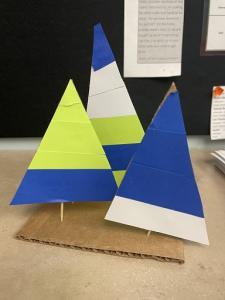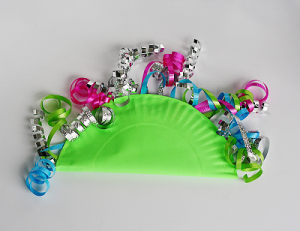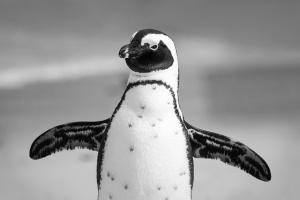Supplies:
Cardboard triangles
paper strips
other decorations
toothpicks
cardboard rectangle or square stand
glue
scissors
Directions:
1. First, have a grown-up help with cutting cardboard (see supply list above.)
2. Glue paper strips to cover the cardboard triangle trees.
3. Trim excess.
4. Stick a toothpick into each cardboard tree as a trunk.
5. Stick your trees into the cardboard stand to make a winter scene.
Take and Makes for this project will be available at area PPLD Libraries beginning this Friday, Dec. 18, 2020
Supplies:
Provided in your Take and Make bag:
- paper plate
- ribbon
- beans
You will need to provide:
- glue/stapler/tape
- scissors
- markers
- more decorative materials (opt.)
Directions:
- Turn your plate upside down and decorate it however you like.
- Fold your plate in half so the art shows.
- Cut each ribbon into smaller pieces (not too small, around 2-3 per ribbon length; they shrink when they are curled!) and curl with scissors. You will now have some curly ribbons. You might need to ask a parent for help with this step.
- Tape your curled ribbons to the edge of one half of your paper plate.
- Put your beans in your folded plate and staple along the edges to keep it secure.
- Make some music! With your art, the curled ribbons, and the noisy beans, you have a colorful and creative music shaker!
Take and Make kits for this project will be available at area PPLD libraries beginning this Friday, Dec. 11, 2020.
Materials in Take and Make:
- Penguin copied on cardstock
- Pipette
- Printed penguins
- Sand
- Plastic egg
Materials from home:
- Crayons
- Water
- Cookie sheet
- Baking pan
- Ice cubes
- Tape
Penguin facts:
- Penguins can’t fly. They use their flippers to help them swim and to propel themselves as they glide on the ice.
- The torpedo shape of a penguin’s body helps it zip through the water at up to 25 mph.
- When it’s in the water, a penguin is usually searching for food. It can hold its breath for about 6 minutes.
- To move quickly across the ice, a penguin glides on its tummy.
- Penguins are warm-blooded. Like whales, they have a layer of blubber (fat) under their skin. Their bodies are covered with a layer of feathers that seal in the warmth.
- Penguins secrete oil from a gland that they rub over their bodies to make them water and windproof. They also huddle together to stay warm.
Experiment 1 – How do penguins stay dry?
Color the large penguin with crayons, pressing firmly. Use the pipette to drop water on it. See how the water rolls off the waxy coating. This works the same way with penguins when they rub oil over their bodies to make them waterproof.
Experiment 2 – How do penguins slide on the ice?
Tape a small penguin to an ice cube. Slide it down a slope. Add sand and see how it changes. Friction changes a penguin’s ability to glide quickly.
Activity – Egg transfer game
See if you can use your feet to transfer an egg to another person. This activity mimics the way that penguins transfer an egg from one parent to the other. Keep your egg safe while you do it!
For more information about penguins, look in the library’s non-fiction section (call number 598.47) or visit PPLD Kids Homework section.





